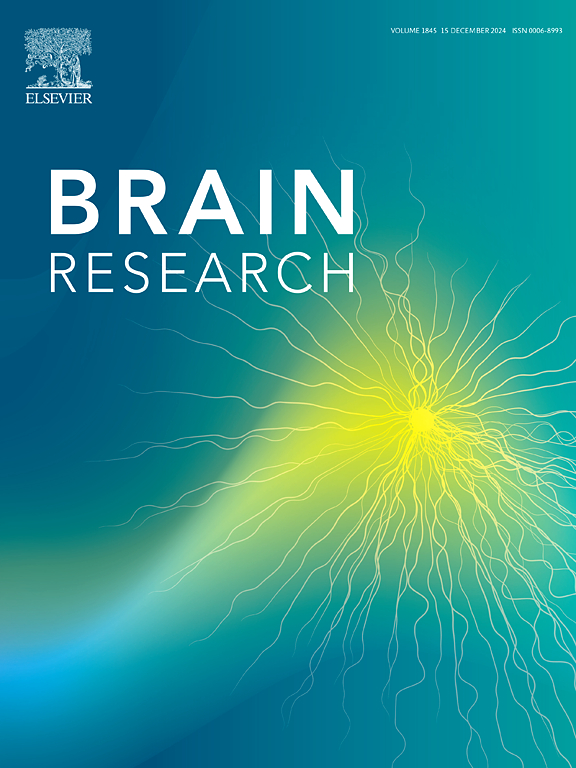超低温保存大鼠脑干、脑桥和延髓组织建立初代混合神经胶质细胞培养的方法
IF 2.7
4区 医学
Q3 NEUROSCIENCES
引用次数: 0
摘要
脑干组织的原代培养可用于研究参与疾病病理的细胞和分子机制,并确定调节神经元和神经胶质细胞活动的新治疗靶点。然而,从啮齿动物胚胎或新生动物中制备原代培养物是劳动密集型的,并且很难产生高质量的一致培养物。为了克服这些问题,冷冻保存可用于获得标准化、高质量的脑干神经元和神经胶质细胞。采用90:10 (v/v)胎牛血清/二甲亚砜细胞冷冻培养基,建立了一种简化的Sprague-Dawley新生儿脑桥和延髓组织原代细胞培养的冷冻保存方法。与新鲜培养物相比,冷冻保存的脑干细胞在液氮中储存长达一年,表现出相似的神经元和胶质细胞形态、细胞比例和活力。与疼痛信号和中枢致敏有关的神经元和神经胶质细胞中的蛋白质表达与报道的亚细胞定位一致。神经元和神经胶质细胞内钙水平升高是对ATP的反应。这种制备和冷冻保存脑干细胞以建立初级神经胶质细胞培养的方法与新鲜制备方法类似,简单明了,可用于生化、细胞和分子研究,增加了可重复性,不需要特殊设备或试剂,节省了实验室资源,包括时间和金钱,减少了研究中使用的动物数量,并增加了研究设计的灵活性。本文章由计算机程序翻译,如有差异,请以英文原文为准。

Method for cryopreservation of brainstem pons and medulla oblongata tissue from Sprague Dawley rats for establishing primary mixed neuron-glia cell cultures
Primary cultures of brainstem tissue can be used to investigate cellular and molecular mechanisms involved in disease pathology and to identify novel therapeutic targets that modulate neuron and glial cell activities. However, preparation of primary cultures from rodent embryos or neonatal animals is labor-intensive, and it can be difficult to produce high-quality consistent cultures. To overcome these issues, cryopreservation can be used to obtain standardized, high-quality stocks of brainstem neuronal and glial cells. We present a simplified cryopreservation method for establishing primary cell cultures of pons and medulla oblongata tissue from Sprague-Dawley neonates, using a 90:10 (v/v) fetal bovine serum/dimethyl sulfoxide cell freezing medium. Cryopreserved brainstem cells stored for up to one year in liquid nitrogen exhibited similar neuronal and glial cell morphology, cell ratios, and viability when compared to fresh cultures. The expression of proteins in neurons and glial cells implicated in pain signaling and central sensitization agreed with their reported subcellular localization. Elevated intracellular calcium levels were observed in neurons and glia in response to ATP. This method for the preparation and cryopreservation of brainstem cells for establishing primary neuron-glia cultures similar to fresh preparations, is straightforward, can be utilized for biochemical, cellular, and molecular studies, increases reproducibility, requires no special equipment or reagents, saves laboratory resources including time and money, reduces the number of animals used in research, and increases flexibility in study design.
求助全文
通过发布文献求助,成功后即可免费获取论文全文。
去求助
来源期刊

Brain Research
医学-神经科学
CiteScore
5.90
自引率
3.40%
发文量
268
审稿时长
47 days
期刊介绍:
An international multidisciplinary journal devoted to fundamental research in the brain sciences.
Brain Research publishes papers reporting interdisciplinary investigations of nervous system structure and function that are of general interest to the international community of neuroscientists. As is evident from the journals name, its scope is broad, ranging from cellular and molecular studies through systems neuroscience, cognition and disease. Invited reviews are also published; suggestions for and inquiries about potential reviews are welcomed.
With the appearance of the final issue of the 2011 subscription, Vol. 67/1-2 (24 June 2011), Brain Research Reviews has ceased publication as a distinct journal separate from Brain Research. Review articles accepted for Brain Research are now published in that journal.
 求助内容:
求助内容: 应助结果提醒方式:
应助结果提醒方式:


